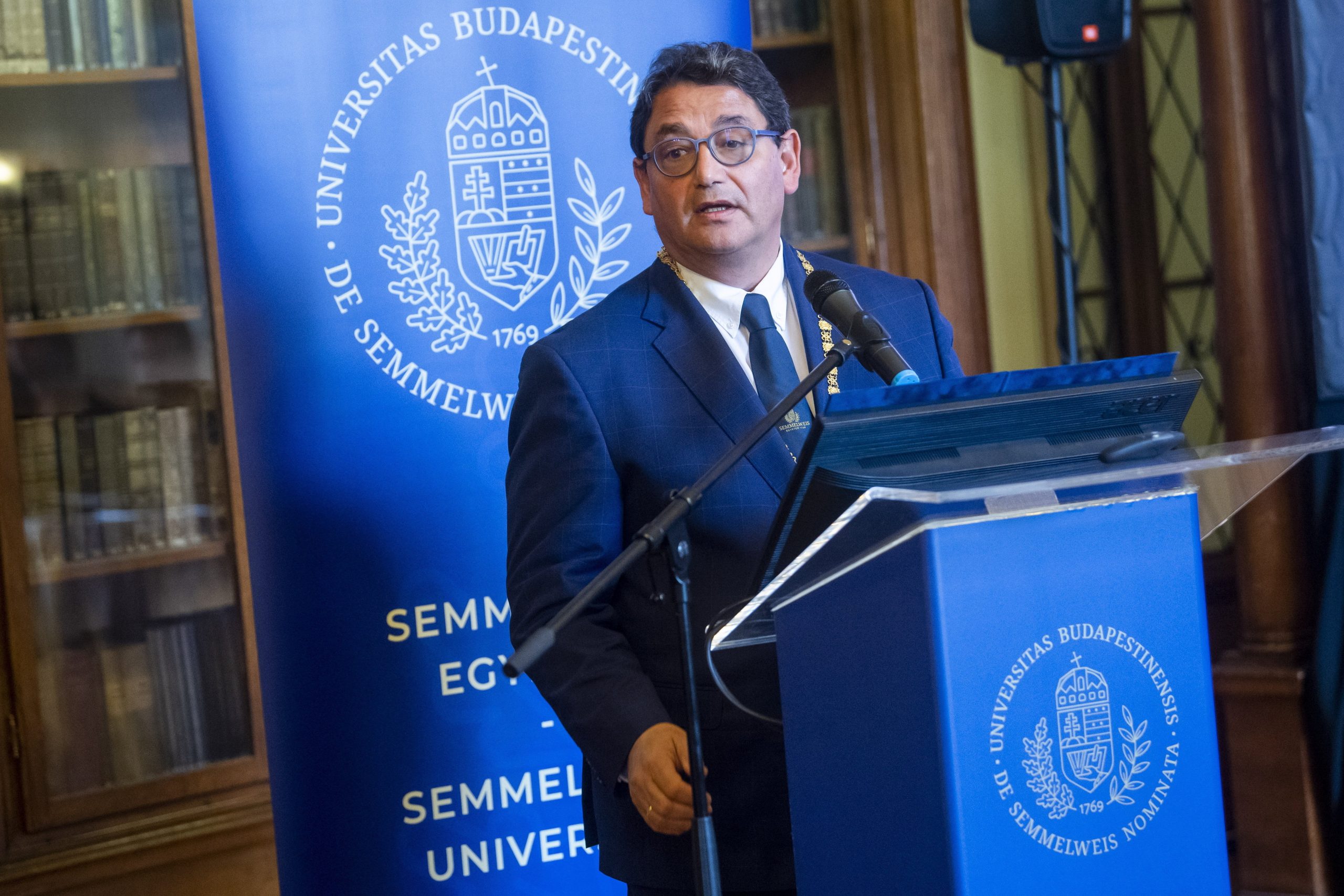
The software developed in cooperation between Semmelweis University (SE), Ulyssys Kft., and the Institute for Computer Science and Control (SZTAKI), which uses artificial intelligence to automatically analyze CT images (Computed Tomography) and aids the early detection of cancer, could be a milestone in lung cancer diagnostics, said Béla Merkely, Rector of SE.
The rector also said that the cutting-edge development will enable the automatic and rapid diagnostic analysis of chest CT scans, thereby reducing the burden on doctors.
Béla Merkely stressed that education, research innovation, and medicine have helped the university to become an internationally recognized center of excellence, making it the most successful institution in higher education rankings in Central Europe. Their aim is to rank among the top 100 universities in the world and among the top five medical universities in Europe.

Béla Merkely, Rector of Semmelweis University; MTI/Zoltán Balogh
Péter Wellisch, Managing Director of Ulyssys IT Services and IT Consulting, said that good cooperation between the university research sector and the SME sector had been successfully established. He said that they had been working on artificial intelligence for a long time, but had not previously thought that healthcare would be one of the areas where it could be applied.
Asked when he expects the program to be used in Hungarian patient care, Wellisch said a clinical trial is under way and will be completed in a few months. He hopes to have the program in place in the second half of next year.
Pál Maurovich Horvat, director of the Medical Imaging Center at Semmelweis University, said lung cancer was also one of the leading causes of death in Hungary, which had the highest mortality rate in Europe. He also said that the five-year survival rate of lung cancer is greatly influenced by when a tumor is detected.
The project was part of the Széchenyi 2020 program, for which the Hungarian government provided HUF 1.448 billion (35.7 mil. EUR) in EU funding.
Via: MTI; Featured image: Pixabay